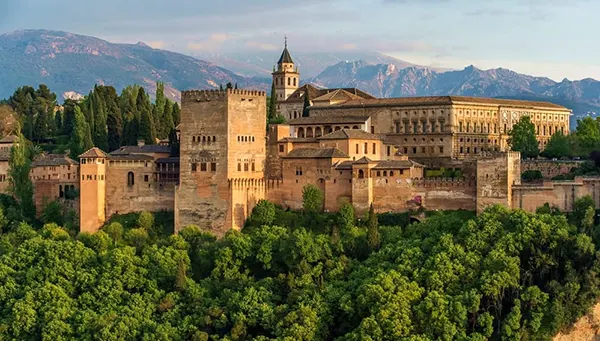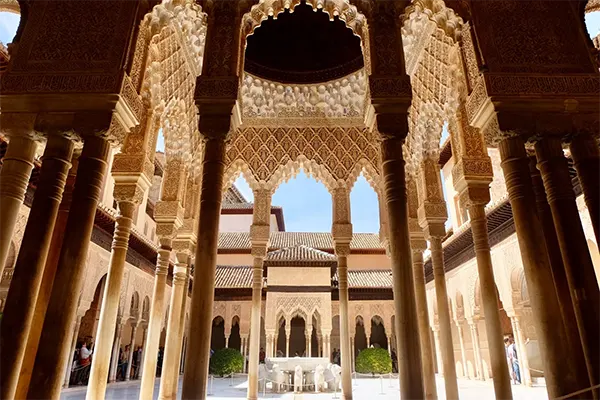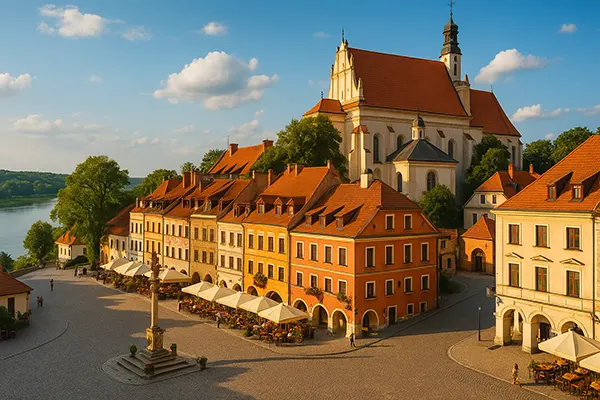
Alhambra (Granada, Spain): Moorish Palace with Gardens
The Alhambra in Granada stands as one of the most remarkable architectural and cultural landmarks in Europe. Built during the Nasrid dynasty in the 13th and 14th centuries, this palace complex represents a unique fusion of Islamic artistry and later Christian influences. Today, it is a UNESCO World Heritage Site and continues to attract millions of visitors annually, offering a glimpse into Spain’s diverse history and the legacy of Moorish rule in the Iberian Peninsula.
The Historical Background of the Alhambra
The Alhambra’s origins date back to 889 AD, when a small fortress was constructed on the Sabika Hill. It was later transformed in the mid-13th century under Muhammad I, the founder of the Nasrid dynasty, into a fortified royal residence. Successive rulers expanded the complex, adding palaces, defensive walls, and lavish gardens that highlighted the sophistication of Moorish culture.
Following the Reconquista in 1492, the Alhambra fell into the hands of the Catholic Monarchs, Ferdinand II of Aragon and Isabella I of Castile. They preserved much of its architecture but also introduced Renaissance elements, such as the Palace of Charles V. This blending of styles further enriched the cultural and artistic value of the site.
Despite periods of neglect, especially during the 18th century, restoration work beginning in the 19th century has preserved the Alhambra’s splendour. Today, it stands as a powerful reminder of both Moorish artistry and Spain’s layered history.
Architectural Significance
The Alhambra is celebrated for its exquisite Islamic architecture, which demonstrates an extraordinary attention to symmetry, detail, and symbolism. Its walls are decorated with intricate arabesques, calligraphy, and muqarnas, which create a mesmerising play of light and shadow. The Court of the Lions, with its famous fountain supported by twelve marble lions, symbolises both power and paradise.
The complex also includes impressive defensive structures, such as the Alcazaba fortress, which provided protection and military strength. This balance between defence and beauty reflects the dual role of the Alhambra as both a stronghold and a royal residence.
Renaissance contributions, particularly the Palace of Charles V, contrast with the Moorish design yet add another layer to the site’s architectural narrative. This mixture of influences showcases the transition from Islamic to Christian Spain.

The Gardens and Natural Harmony
The Alhambra’s gardens are an integral part of its design, reflecting the Islamic concept of paradise on earth. The Generalife, a summer palace and garden retreat for the Nasrid rulers, features flowing water, aromatic plants, and shaded walkways that create a serene environment.
Water plays a central role in the gardens, symbolising life and purity. Channels, fountains, and reflective pools were engineered to distribute water throughout the complex, enhancing both its functionality and its beauty. These features continue to astonish visitors with their sophistication and timeless elegance.
In addition to their aesthetic appeal, the gardens were also practical, containing orchards and agricultural plots that provided sustenance for the inhabitants. This blend of beauty and utility demonstrates the ingenuity of Moorish landscape design.
The Generalife Experience
The Generalife, located just outside the main palace complex, served as a retreat from the formalities of court life. Its terraced gardens offer stunning views over Granada and the surrounding Sierra Nevada mountains, creating a natural harmony between architecture and landscape.
The Patio de la Acequia (Court of the Water Channel) is the most iconic feature of the Generalife. Lined with flowerbeds, cypress trees, and fountains, it provides a tranquil setting that exemplifies Moorish garden design principles.
Visiting the Generalife allows travellers to appreciate the importance of leisure, reflection, and nature in Moorish culture, highlighting the contrast between the bustling palaces and the peaceful retreat of these gardens.
The Alhambra Today
In 2025, the Alhambra continues to be one of Spain’s most visited cultural sites, with strict visitor management to preserve its fragile architecture and decorations. The site attracts scholars, architects, and tourists alike, offering insights into the achievements of Moorish Spain and its lasting influence on European culture.
Efforts by conservationists ensure that the delicate plasterwork, wooden ceilings, and tiled floors remain protected against erosion and mass tourism. Advanced restoration techniques, combined with sustainable tourism practices, help maintain the Alhambra for future generations.
Beyond its role as a tourist attraction, the Alhambra serves as a symbol of coexistence between cultures. It represents the blending of Islamic, Christian, and Renaissance elements, reminding the world of Spain’s multicultural heritage and the importance of preserving historical monuments.
Visiting Practicalities
To manage the high demand, visitors are encouraged to book tickets well in advance. Entry numbers are capped daily to protect the site’s integrity. Guided tours are available in multiple languages, offering in-depth historical context for each section of the complex.
The best time to visit is during spring or autumn, when the weather is mild and the gardens are at their most colourful. Evening visits, introduced in recent years, allow guests to experience the Alhambra illuminated under the night sky, adding a new dimension to its beauty.
As of 2025, the Alhambra stands not only as a historical monument but also as a model for sustainable cultural tourism. It continues to inspire those who walk through its halls and gardens, providing a timeless connection to Spain’s past.




